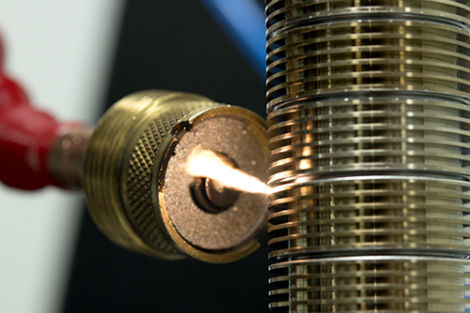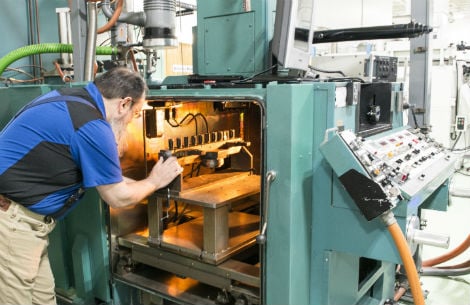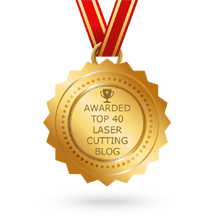After you’ve selected the right material for your welding project, the next important consideration is joint design. We’ll be taking a look at the different types of joints and briefly discussing the pros and cons of each, especially in relation to laser and electron beam (EB) welding. Let’s start with one of the strongest joints, the groove joint, and what makes it so "groovy":
Weld contamination part 2 – aluminum oxide
| Aluminum oxide contamination is no big deal for that rusty yard art project, but can wreak havoc on critical applications like an axle shaft. (Spider by John Lucas, Jr.) |
I’ve talked about weld contaminants in a previous post, but a recent conversation convinced me that it was a topic that warranted revisiting.
Aluminum oxide (AlO), in particular, is a nasty contaminant that is oft overlooked.
Material selection for laser and EB welding - do's and don'ts
One of the most important factors in a successful laser or electron beam (EB) welding project is choosing the right materials up front. The right material can make the difference between a project that runs smoothly and gets delivered on time, and a project that takes longer, costs more, and causes a lot of aggravation. While we could probably write a book on this topic, here are a few do’s and don’ts to get started.
10 advantages of electron beam welding
Since we started this blog a few months ago, we’ve written about a lot of topics related to laser welding, which hopefully you’ve found useful. Now we’d like to turn your attention to another type of welding that’s a favorite of ours – electron beam welding.
Electron beam (EB) welding is an excellent choice for joining advanced materials used in industries such as aerospace, semiconductors, and medical devices. Here are 10 advantages of EB welding. (I could come up with more, but 10 is a nice round number, isn’t it?)













